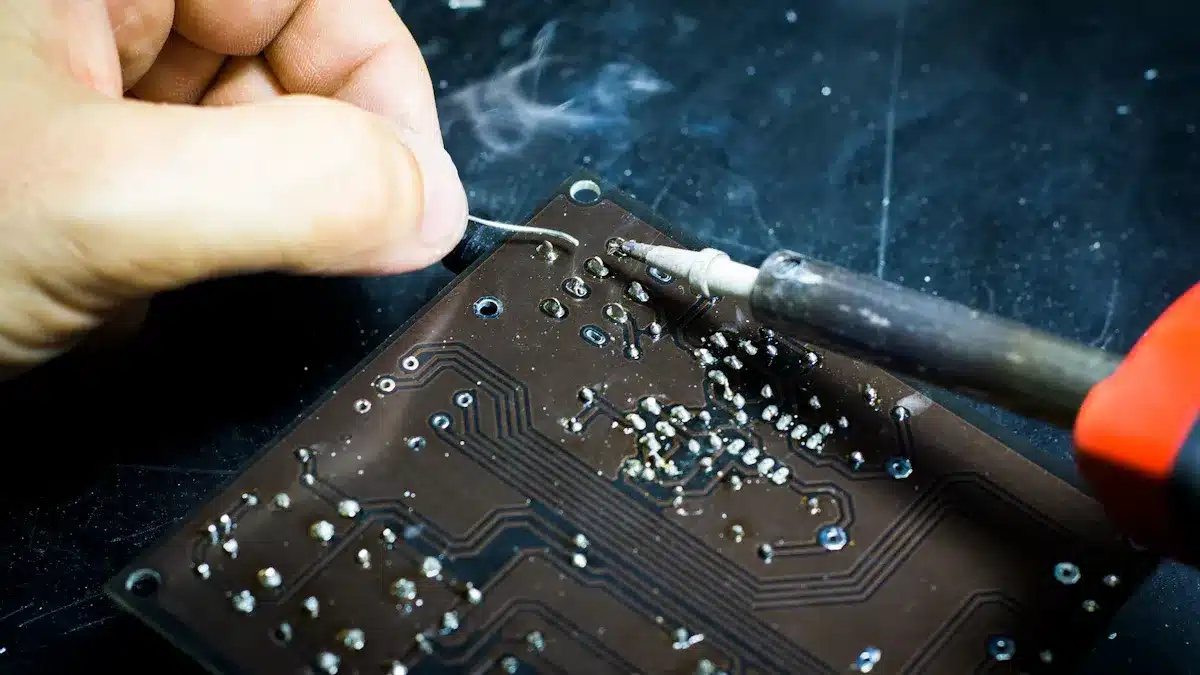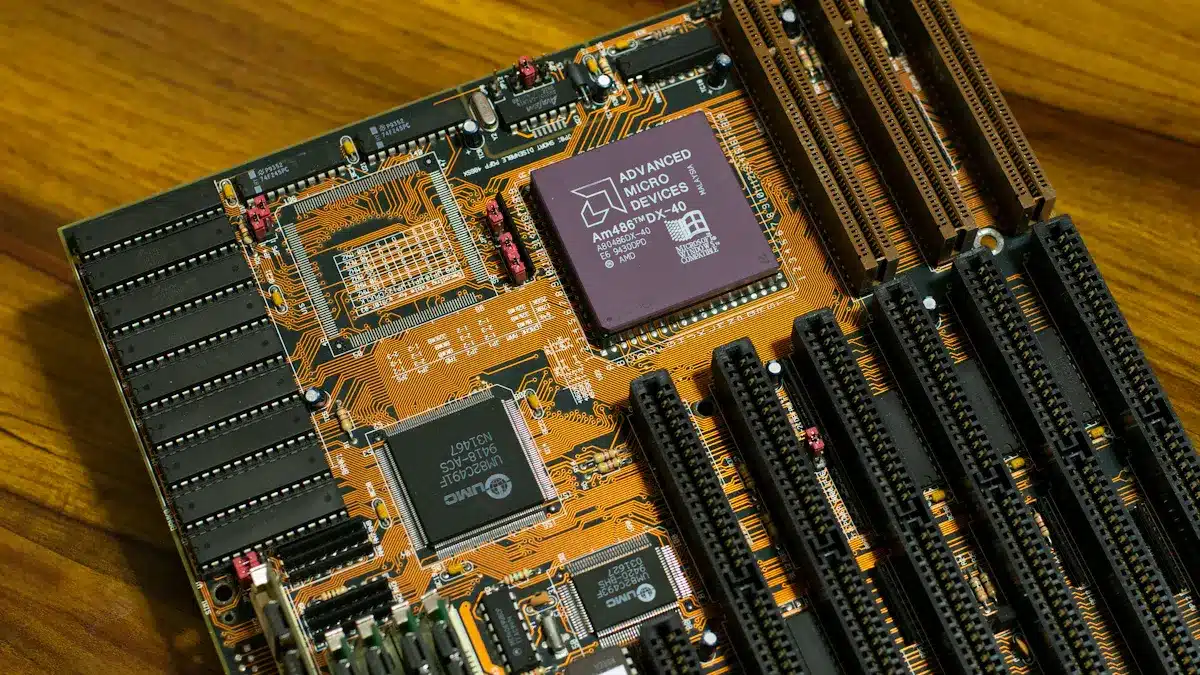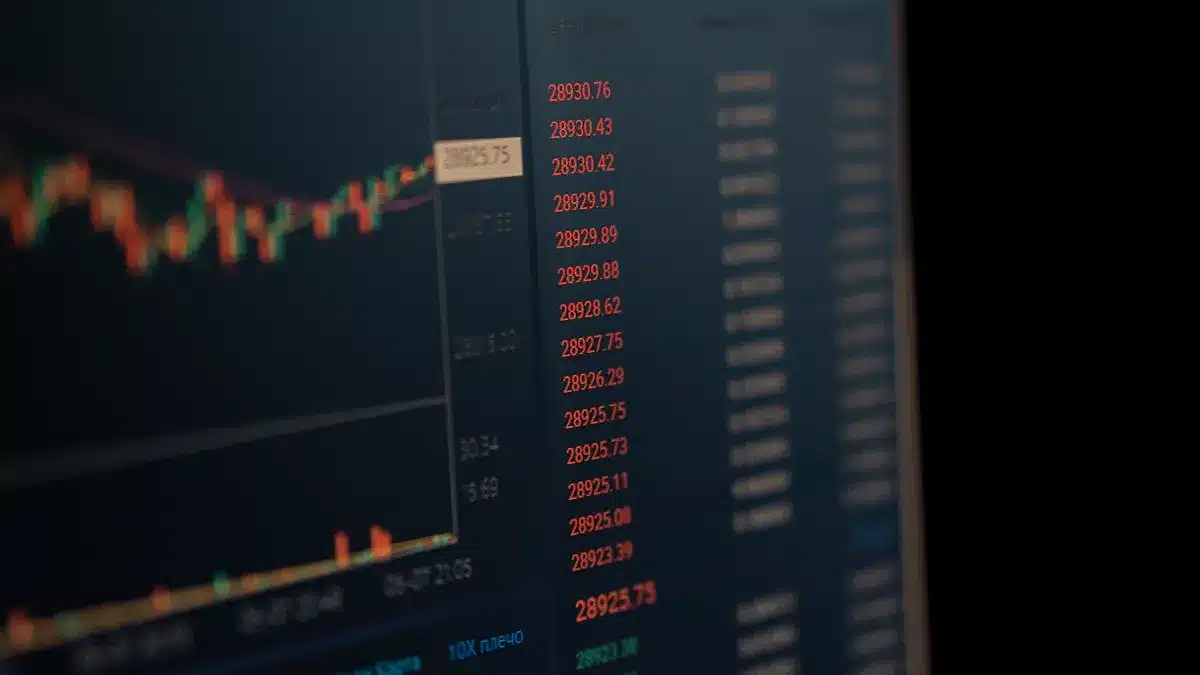
Printed circuit boards have changed electronics. They make devices smaller, faster, and more dependable. The growth of the pcb industry shows how technology affects our lives. This includes things like smartphones and electric cars. Learning about the history of pcbs helps people understand these changes. It is useful for workers, students, and fans of technology.
The worldwide pcb industry was worth USD 84.4 billion in 2023. This big growth happened because more people want electronics, IoT, and new car technology.
Aspect | Impact on Electronics |
|---|---|
PCBs help make devices smaller and stronger | |
Versatility | Flexible and multilayer pcbs allow new tech |
Performance | Advanced pcbs make devices faster and better |
Being curious about how printed circuit boards have changed shows us how new ideas keep shaping our world.
Key Takeaways
Printed circuit boards (PCBs) helped make electronics smaller and faster. They also made electronics more reliable. This changed modern devices like smartphones and electric cars.
The PCB industry started with inventions in the early 1900s. It grew a lot after World War II. Factories began making many PCBs at once. Multi-layer and flexible boards were made. These boards fit more circuits in less space.
New things like integrated circuits and surface mount technology helped PCBs get more complex. PCBs became more powerful. This made tiny, high-performance devices possible.
New materials and eco-friendly ways to make PCBs help a lot. PCBs are now stronger and safer for the environment. They work well for fast-growing markets like 5G and wearables.
In the future, PCB trends will include automation, AI, and flexible designs. These will help make smaller and smarter electronics. They will be used in healthcare, cars, and IoT industries.
History of PCBs

Early Inventions
Printed circuit boards started with many inventions. Inventors wanted better ways to connect electronic parts. They also wanted devices to work well. The story of printed circuit boards began in the early 1900s.
Here are some important steps in how printed circuit boards changed:
In 1903, Albert Hanson talked about flat foil conductors on boards. He shared ideas about multi-layer boards and through-hole connections.
Thomas Edison tried chemical plating of conductors on linen paper in 1904.
Arthur Berry made a print-and-etch method in 1913.
Charles Ducas created electroplating circuit patterns in 1925.
John Sargrove built machines to spray metal onto Bakelite boards from 1936 to 1947.
Paul Eisler invented the printed circuit for radios in 1936.
During World War II, printed circuit boards were used in proximity fuzes. This was the first time pcb was made in large numbers.
These inventions helped printed circuit boards get better. They helped the pcb industry grow.
First Printed Circuit Board Patent
Many inventors got patents for printed circuit boards. The table below lists some important patents and what they did:
Inventor | Year | Patent/Contribution Description | Key Features |
|---|---|---|---|
Albert Hanson | 1903 | British patent for flat foil conductor on insulating board with multiple layers and through-hole concept | Multi-layer insulating board, flat foil conductor, through-hole electrical connections |
Charles Ducas | 1925 | Filed first American patent for PCB-like invention by stenciling conductive material on wooden board | Conductive material stenciled on flat wooden base |
Paul Eisler | 1943-47 | Created first prototype resembling modern PCB; patented copper foil on non-conductive glass base; used in radio | Copper foil on insulating base, prototype of modern PCB, applied in radio and military tech |
U.S. Army Patent | 1956 | “Process of Assembling Electronic Circuits” patent involving printing pattern on zinc-composite plate | Printed pattern as blueprint for wire interconnections on foil, advancing PCB assembly |
These patents started the pcb industry. They are important in the history of printed circuit boards.
Industry Beginnings
The pcb industry grew after World War II. Printed circuit boards moved from military to everyday products. In 1948, the US Army let people use pcb technology. Companies started using printed circuit boards in radios, TVs, and computers. The first pcb in home electronics was in the 1950s. Printed circuit boards kept getting better as technology improved. Double-sided and multi-layer boards came in the 1960s and 1970s. These changes made electronics smaller and stronger. The history of printed circuit boards shows how the pcb industry helped make modern technology and computers.
PCB Industry Growth

Consumer Electronics Era
The 1950s and 1960s were important for printed circuit boards. Many new televisions, radios, and computers were made during this time. This made people want more pcbs. Companies needed better ways to connect electronic parts. Printed circuit boards helped solve this problem.
In the 1950s, many new electronics came out. Televisions and radios were in most homes. Early computers started showing up in offices and labs.
The space race in the 1960s needed lighter and better parts. Printed circuit boards worked well in spaceships and home products.
New ideas like plated through-hole and surface mount made pcbs smaller and stronger. These changes helped electronics become more advanced.
PCB materials changed from simple things to strong resins. This made it easier to make more boards faster.
Early printed circuit boards had only one side but were still better than old wiring.
By 1960, engineers made multi-layer pcbs with four or more layers. This saved space and let designers do more with less room. It helped electronics become more complex.
The rise of consumer electronics made pcb production grow fast. Asia-Pacific became the top pcb maker. China, Japan, and South Korea had big factories. In 2022, Asia-Pacific made 47% of all pcb money. North America had 27%, and Europe had 19%.

Statistic Description | Value/Projection | Source/Year |
|---|---|---|
Global PCB market value (2021) | $75 billion | GMI, 2021 |
Projected global PCB market value (2030) | $120 billion | GMI, 2030 projection |
Consumer electronics market size projection (2030) | $1.2 trillion | Fortune Business Insights, 2030 |
PCB market CAGR (next decade) | 5.0% | GMI |
Flexible PCB market CAGR | 10.6% – 10.7% | ResearchAndMarkets, Maximize |
Asia-Pacific revenue share in PCB production (2022) | 47% | GMI, 2022 |
North America revenue share (2022) | 27% | GMI, 2022 |
Europe revenue share (2022) | 19% | GMI, 2022 |
The pcb industry also had to deal with changes around the world. Trade rules and supply problems moved factories from China to other places. Companies started making pcbs in Southeast Asia, India, and Mexico. They used a “China+1” plan to lower risks and make more in different countries.
Multi-Layer Boards
Multi-layer printed circuit boards started in the 1950s. This was a big step after single- and double-sided boards. Engineers put copper layers inside the board. This let them run more lines without making the board bigger.
Multi-layer pcbs solved many problems:
They let more parts fit in a small space. This was important for things like smartphones and computers.
Signal quality got better. Multi-layer boards stopped signals from mixing up.
Designers could use different layers for power, ground, and signals.
The small size helped make devices lighter and smaller.
These boards were needed for fast systems in planes, hospitals, and phones.
Multi-layer pcbs have three or more layers with insulation between them. Vias connect the layers so lines can go through the board. New ways to drill and plate, like laser drilling, helped make boards even smaller. Making these boards needed careful drilling and special plating to keep them working well.
Multi-layer printed circuit boards helped make electronics smaller and stronger. They also made devices last longer and work better in tough places.
Integrated Circuits Impact
Integrated circuits, or ICs, came in the late 1950s and 1960s. They changed the pcb industry a lot. ICs put many parts into a tiny chip. This made people need smaller and more packed pcbs.
In the 1980s, ICs got even smaller. This made people want tiny and complex pcb designs.
Multi-layer pcbs were needed for more connections and jobs on one board.
Surface Mount Technology, or SMT, let parts sit right on the board. This meant no more holes and made building boards faster.
SMT made boards work better by making paths shorter and fitting more parts.
High-Density Interconnect pcbs used tiny holes and thin lines. This let them fit lots of parts in a small space.
Rigid-flex and flexible pcbs mixed hard and bendy parts. This made devices smaller and lighter.
Typical Applications | PCB Types Used | Impact on PCB Design Complexity | |
|---|---|---|---|
x86/x64 | Desktops, servers | Multilayer | Complex design due to high performance and power requirements |
ARM | Smartphones, IoT | HDI, flexible, rigid-flex, multilayer | Requires compact, power-efficient PCBs with advanced interconnects and flexible designs |
RISC-V | Embedded systems | HDI, multilayer | Customizable, cost-effective PCBs with moderate complexity |
ASIC | AI, crypto mining | Multilayer, HDI, MCPCB | Highly optimized PCBs with custom layouts and thermal management |
ICs brought new problems to solve. Designers had to keep signals clear, control heat, and build boards very carefully. They used smart computer tools and worked closely with factories.
Integrated circuits helped printed circuit boards do more than ever before. They made it possible to have tiny, powerful devices like medical tools, smartphones, and fast computers.
Printed Circuit Board Technology Advances
CAD and Miniaturization
Computer-aided design tools help engineers make printed circuit boards. Designers use CAD to test and check boards before building them. This helps them see if everything fits inside the device. CAD lets them change designs quickly and check for mistakes. These tools save time and make fewer errors. The pcb manufacturing process is faster and more exact now. Teams finish more projects with less trouble. CAD also helps people share information and keep track of changes. This makes making pcbs smoother and more dependable.
Miniaturization has made technology move forward. Devices like smartwatches and fitness trackers are small because of miniaturized printed circuit boards. Smaller boards help save energy, which is good for planes and other industries. More parts can fit in tiny spaces now. Surface-mount technology puts small parts in the right spot. This keeps layouts neat and strong. Miniaturized pcbs last longer and work well in tough places. These changes help new products in wearables, IoT, and aerospace.
Miniaturization makes devices small and easy to carry.
It helps save energy and makes devices work better.
More parts fit in less space now.
New ways to build keep boards strong and neat.
High-Density Interconnect (HDI)
High-density interconnect technology is a big step for pcbs. HDI uses tiny holes and special spaces to fit more lines. This lets more connections fit in small spots. HDI boards have fewer layers but do more jobs. They handle heat better and make signals clearer. Engineers use lasers and special stuff to make these boards.
Benefits of HDI Technology | |
|---|---|
Tiny holes and hidden spaces | Smaller devices |
Lots of connections in small areas | Better electrical work |
Fewer layers needed | Handles heat well |
Special ways to connect | Lasts longer |
Strong, fast materials | Good for fast devices |
Short signal paths | Needed for telecom, medical, AI, IoT |
The HDI pcb market is growing fast, mostly in Asia Pacific. People want smaller and better electronics. New tech in phones, 5G, and cars helps this growth.
Material Evolution
New materials have changed how pcbs are made. Some use bio-based resins and high-frequency laminates. Bio-based materials come from plants and break down easily. Green chemistry uses safer chemicals and makes less waste. Additive manufacturing, like 3D printing, uses less material and makes cool shapes.
High-frequency laminates help signals for 5G and radar.
Metal core pcbs move heat away in LED and power electronics.
Flexible and rigid-flex boards use special plastics for light and small designs.
Halogen-free and biodegradable boards help the planet.
Lead-free materials are safer and better for the earth.
Picking materials changes cost and how strong boards are. Fancy materials cost more but make boards last longer. Makers must choose what works best for their budget. Research keeps trying to make pcbs cheaper and stronger for all kinds of tech.
Modern PCB Trends
Flexible Printed Circuit Boards
Flexible printed circuit boards are very important today. Many companies use these boards because they can bend and fit in tight places. Wearable devices, car electronics, and medical tools all need flexible boards. The market for flexible boards is growing quickly. By 2030, it could be worth over $50 billion. Asia Pacific makes the most pcbs because it has big electronics factories and cheaper costs.
Industry | Use of Flexible PCBs |
|---|---|
Consumer Electronics | Smartphones, tablets, and wearables |
Automotive | Displays, lighting, and electronic controls |
Healthcare | Medical sensors and flexible devices |
Aerospace & Defense | Lightweight, compact systems |
Flexible boards cost more for each board than rigid ones. But they can save money by not needing extra connectors or wires. They also let people design new kinds of electronics. Devices can be lighter and last longer. Companies spend money on research to make these boards better for new technology.
Eco-Friendly Manufacturing
Eco-friendly pcb manufacturing is now very important. People want technology that is better for the earth. Factories use water recycling and safer chemicals. They also use machines that save energy. Many companies pick halogen-free materials and lead-free solder. This helps keep the environment safe. Some factories use 3D printing to make less waste and use less water. Recycling programs help keep old boards out of landfills.
Factories clean water and reuse byproducts.
Energy-saving machines and LED lights help lower pollution.
Modular pcb designs make it easy to swap parts and cut waste.
Additive manufacturing uses only what is needed, saving materials.
These actions help stop pollution and save water and energy. Green certifications show that companies care about the earth and use safe ways to make pcbs.
Future of the PCB Industry
The future of pcb design will have new problems and chances. Electronics are getting smaller and harder to build. Factories use smart machines and robots to keep up. Automation and 3D printing help make boards faster and with less waste. Artificial intelligence helps find mistakes early and make boards better.
Cars, healthcare, and IoT need small, powerful boards.
Digital twins and AI help control supply chains and keep things safe.
New materials help with fast and high-frequency tech like 5G.
Companies must think about cost, quality, and speed. Agile teams can change plans fast and make new products quickly. In the future, there will be more flexible, green, and strong printed circuit boards everywhere.
The story of printed circuit boards has many big steps that changed technology.
Phase | Time Period | Impact on Technology |
|---|---|---|
1925–1941 | Reliable circuit boards | |
Military Development | 1943–1947 | Strategic wartime electronics |
1948–1970 | Mass production, miniaturization | |
Advanced Manufacturing | 1970–1990 | Smaller, complex devices |
Modern Innovations | 2000s–Present | Flexible designs, new sectors |
New ideas help the industry keep up with changes. Robotics and AI make boards better and faster. Green manufacturing helps the earth and saves energy. In the future, cars, healthcare, and 5G will need more printed circuit boards. The industry faces problems like picking the right materials and keeping up with fast changes in electronics.
FAQ
What does PCB stand for?
PCB stands for Printed Circuit Board. People use PCBs to link electronic parts together. They help devices work well and last longer. You can find PCBs in phones, computers, and cars.
Why do manufacturers use multi-layer PCBs?
Multi-layer PCBs let engineers put more circuits in a small space. This makes devices smaller and faster. These boards help smartphones, laptops, and medical tools work well.
Tip: Multi-layer PCBs make signals clearer and stop interference.
How do flexible PCBs help modern devices?
Flexible PCBs can bend and twist to fit small spaces. Designers use them in wearables, medical sensors, and cars. These boards make products lighter and stronger.
Device Type | Flexible PCB Use |
|---|---|
Smartwatch | Curved display circuits |
Fitness tracker | Sensor connections |
Medical patch | Patient monitoring |
Are PCBs safe for the environment?
Manufacturers use eco-friendly materials and recycling programs. They pick lead-free solder and halogen-free boards. These choices help protect nature and lower pollution.
🌱 Eco-friendly PCBs help make the world cleaner.